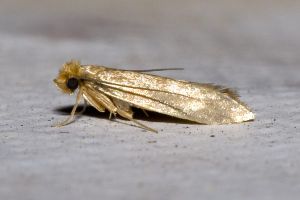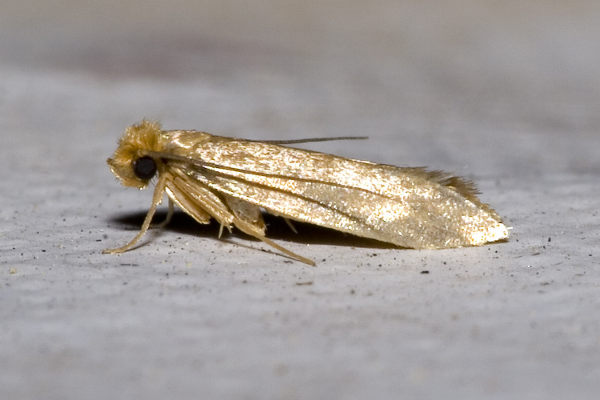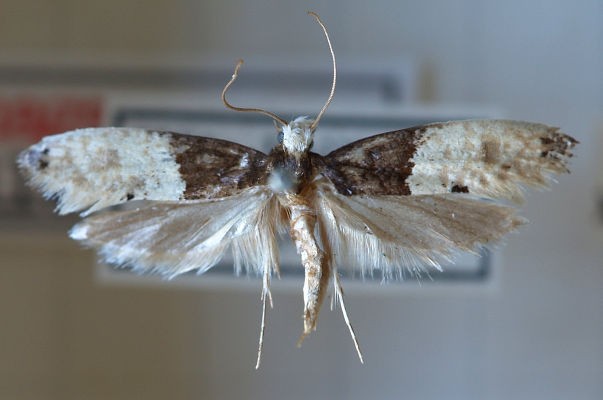Moth Infestation: Identification and Treatment
The humble moth, the weird uncle of the Butterfly family. We have all encountered them, usually when you least expect it, flying straight at your face after opening a wardrobe or noisily flapping around a light casting disturbing shadows across the ceiling.
Not only do they frustrate us with their endless headbutting of light fixtures but they also have the cheek to eat our clothes, carpets and dry foods while simultaneously spreading moth dust everywhere.
Approximately 1,5 million homes across the UK suffer from moth infestations. But with a little effort, you can easily remove an infestation or pre-emptively reduce the chances of those failed butterflies getting a foothold in your home.
To help you protect your sweaters, we spoke to our pest control experts and created this guide on how to recognise an infestation and stop it.
Moth Infestation Signs
Tineola bisselliella

It’s also known as clothes moth. Due to the small size of the eggs and moth larvae, most infestations initially go unnoticed. It is only when adults appear or when holes start appearing in your clothing that it becomes obvious. Moths are equal opportunity destroyers of clothing with no preference over wardrobes, closets or drawers so when looking for signs of their presence be sure to check everywhere clothes are stored in your home.
Moths like to lay their eggs in warm, dark places so pay particular attention to the corners of your wardrobe, drawers, skirting boards and architraves.
Trichophaga tapetzella

The carpet moth, just like clothes moths, can be difficult to notice the beginnings of an infestation of their carpet-dwelling cousins. Signs of their presence will include patches with a threadbare appearance forming in carpets and rugs, usually in darker areas such as around furniture and near walls.
Read more: What damages do moths cause?
Plodia interpunctella

Food moths are almost impossible to detect while in the egg stage but will gradually become more evident as the larvae mature and develop into a white or cream colour. Alternative common names are weevil moth, pantry moth, flour moth or grain moth. They tend to prefer open packets of dry food such as flour, oats and muesli and will silently munch away in the dark.
Wonder how to get rid of moths?
Book professional moth treatment and forget about the infestation!
How to Get Rid of a Moth Infestation
Now that you know where and what to look for, it is time to get rid of these uninvited guests.
- Deep clean your wardrobe. Moths adore dark, warm spaces so take all of your clothes out of the wardrobe and drawers and give them a thorough cleaning with a vacuum, making sure to get right into the corners. After this, clean the insides with a damp, detergent soaked cloth to kill off any remaining larvae or eggs.
- Lower the heat. As mentioned previously, moths love the warmth and the use of central heating has greatly extended their normal period of activity. Try lowering the temperature setting of your radiators or reduce the amount of time they are in use.
- Clean your clothes. Moths are particularly attracted to food and perspiration stains on clothing so before putting everything back in the now clean wardrobe/drawers, wash all of your clothes. If your clothes are clean, place them in ziplock bags and place in the freezer for 48 hours as the sub-zero temperatures will kill off any hidden larvae or eggs.
- Double-check vintage furniture and clothes. We all love a good bargain but vintage furniture and clothing are usually the sources of moth infestations. Before adding any vintage clothing to your wardrobe or bringing a piece of old-time furniture into your home, make sure they are thoroughly cleaned to avoid the risk of introducing these rude house guests into your home.
- Vacuum and deep clean. Keeping your home clean and well maintained is the surest way to avoid an infestation. Be sure to vacuum and clean on a regular basis and periodically deep clean any wardrobes and drawers.
- Throw out old items. Similar to keeping your home clean, maintaining an orderly wardrobe can also help reduce the chances of an infestation. Every time you purchase a new piece of clothing, try to give away a less used older item.
- Use cedar hangers or cedar balls. Moths detest cedar and it can be quite effective at killing off the eggs and larvae. Invest in some cedar wood hangers or cedar balls for a natural, pleasant smelling moth deterrent.
- Place lavender bags. Similar to the effects of cedar, moths hate the smell of lavender. Try placing bags of dried lavender in your wardrobe and drawers to keep moths at bay, keep in mind that you should replace the lavender regularly so that the scent always has the maximum effect.
- Check periodically. Vigilance is the key to preventing an infestation occurring or reoccurring. Check your furniture for signs of eggs and larvae, pay attention to your rugs and carpets in darker areas and make sure there are no open packets of food left in cupboards at least once a month. The moths won’t know what hit them and will have no chance to gain a foothold in your household.
If all else fails…
If none of the methods above help to resolve an infestation, or it reoccurs regardless of countermeasures, it is time to seek professional moth control service. Contact us for a quote and let our experts take care of those pesky destroyers of clothing for you.
Upon arrival, our pest control experts will follow the so-called S.T.O.P. framework to ensure that the infestation is resolved in the most effective way.
Want to get rid of moths fast?
Consider that we give information on possible ways to get rid of moths. However, we cannot guarantee that all of the above approaches will work for you.











